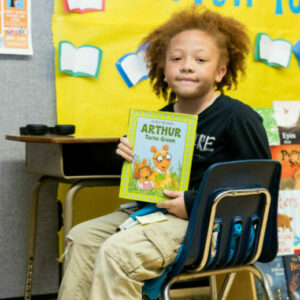Reading comprehension refers to children’s ability to understand what they read. Reading is all about making meaning. When young children are learning to read, they need to do more than just sound out the words to make meaning. Reading comprehension involves thinking about a book and fully understanding the story or information.
Literal thinking
Literal thinking includes ideas that can be found in the book. Literal thinking can include things like:
- Names of characters: “Who are the characters?”
- Events in the story: “What happened in the story”
- The setting or where the story takes place: “Where does the story take place?”
- Important facts: “What information did we learn?”
- Topics included: “What was this book about?”
Inferential thinking
Inferential thinking includes ideas that go beyond the book. Inferential thinking can include things like:
- Characters’ thoughts: “What might the character be thinking?”
- Character’s emotions: “How might the characters feel?”
- The author’s opinion: “What do you think the author would say about this?”
- The author’s message: Why do you think the author wrote about this?”
- A lesson learned: “What lesson did this book teach you?
- A theme or big idea in the text: “What is the main idea or purpose of this book?
Download and print the tip sheet for easy reference.



